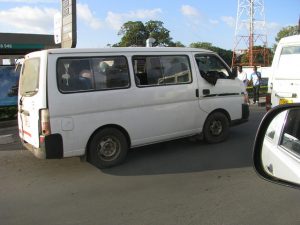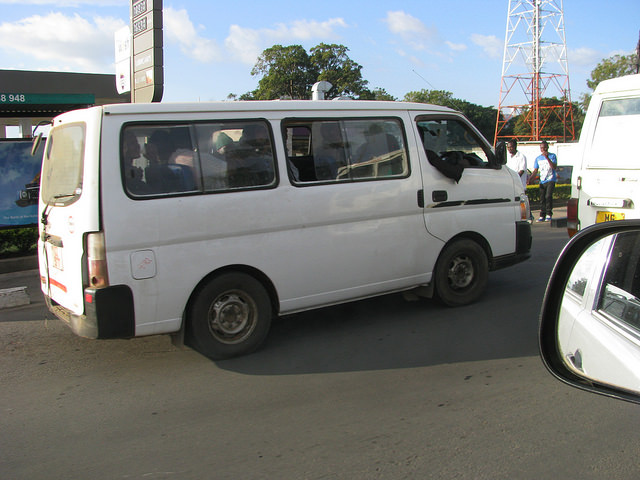
The exact number of these min-van buses would be hard to estimate, but during rush hour traffic in Lilongwe it is not unusual to see more mini-van buses than cars. The problem comes not in their number, as they are the major means of cheap transportation for those watching their budgets. The problem comes in their road-worthiness, driver experience, and the number of people that can be crammed into a single vehicle. As for the latter it is not unusual to see 12 to 15 people crammed into van with an 8 or 9-passenger capacity. At certain times, and in far too many places, this is the norm and not the exception.
As to driver performance those participating in the Grand Prix, or the Indianapolis 500 could take a lesson. Wait a minute! Perhaps not! One could conclude there would be no winner in either of these races if they drove the course the way the mini-bus drivers ply the roads of Malawi. Weaving in and out of traffic, driving down the center line, turning without signaling, and a host of other road rule infractions would end their quest for the prize. Far too many drive as though they are the only vehicle on a four-lane expressway. Passing is often executed with little or no concern for oncoming vehicles, and potholes that could crack springs, spoil shocks, or rupture tires are of no concern when racing the clock.
Then there is the subject of road-worthiness. Perhaps it is safe to say many of the mini-buses going down the highways are wreaks that have not yet happened.
It must be noted that some vehicles are road worthy, some drivers are responsible drivers, and some mini-van buses carry the prescribed number of passengers. However, getting in the wrong one can be a prescription for traveling in a death trap.

